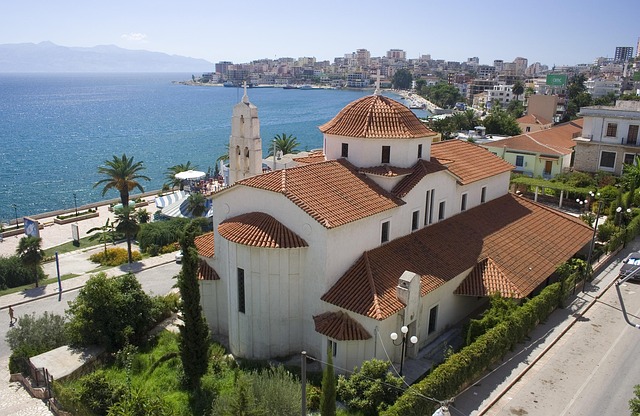
Tirana, Albania - Albania, once the world's most isolated Stalinist dictatorship under Enver Hoxha and later Ramiz Alia, has undergone a dramatic transformation. Today, it stands as one of Europe's most staunchly pro-American nations, eagerly seeking European Union membership.
In the past five years, Albania's tourism sector has experienced explosive growth, driving economic expansion and enhancing the nation's hospitality infrastructure. Under Prime Minister Edi Rama's visionary leadership, Albania welcomed over ten million visitors in 2023, and that number is projected to exceed twelve million in 2024. Tourists, primarily from Germany, Italy, Poland, Spain, and Scandinavia, are drawn to Albania's luxurious resorts and hotels, which offer world-class amenities.
At the ITB Berlin 2025, Albania was honored as the host country, with Prime Minister Rama and his cabinet collaborating with German organizers to present a spectacular arts performance. The event attracted over 5,800 exhibitors from 170 countries.
"Albania has rapidly evolved from a hidden gem to a tourism powerhouse," Prime Minister Rama declared. "The Albanian saying, 'the house of an Albanian family belongs to God and the guest,' reflects the deep-rooted hospitality of our people."
Rama has sought to link Albania's name with "hospitality," emphasizing the nation's unique appeal. Tirana, alongside Saudi Arabia and Qatar, has led in tourism growth "without a FIFA World Cup or Mecca." He particularly praised German tourists for their extended stays and generous spending.
This remarkable transformation is evident in Albania's new architectural trends, which blend seamlessly with the Mediterranean landscape. This approach aligns with the philosophy of Roger Scruton, one of the 20th century's most influential European philosophers. Scruton argued that architecture stems from everyday practice rather than artistic theory, with aesthetics rooted in daily life.
Scruton's "concept of imagination" is vividly displayed in the architectural design of Albania's La Brisa Boutique Hotel. This hotel combines national heritage, pristine nature, exquisite Western European cuisine, and the crystal-clear Ionian Sea, offering a sophisticated vacation experience.
Albania's national strategy to develop eco-friendly and vibrant modern resort infrastructure has led to the emergence of architectural patterns that reflects both modern and traditional styles.
The influence of the Azerbaijani architectural school, particularly the Nakhchivan school, is also prominent in Albania's luxury resorts. This tradition, dating back to the 14th century, is highly regarded by locals and visitors alike. The legacy of Ahmad ibn Ayyub al-Hafiz Nakhchivani, the founder of the Nakhchivan school, is evident in many contemporary designs.
Albanian society has expressed admiration for Azerbaijan's architectural heritage, incorporating elements from Barda and Nakhchivan into the modern development of religious architecture in Elbasan.
Other notable architects who have influenced Albania's urban development include Amiraddin Masud Nakhchivani and Mammad Hasan Jafargulu oglu Hajinski, whose engineering innovations are prevalent across Europe.
In a competitive global environment, Albania's hospitality tradition is enhanced by architectural designs that blend Baku's architectural heritage with the beauty of the European coastline and the Ionian Sea. Scruton's architectural philosophy is reflected in the unique form and structure of the La Brisa Boutique Hotel in Dhermi, southern Albania.
As Ivana Bukadinovic (Helsingborg, 2011) noted, "Architecture has always been of great importance in tourism. The most visible aspects of the cultural landscape are connected to the architecture of a place... (Hudman & Jackson, 2002). Building a brand and selecting unique architectural elements as a tourist attraction can attract more tourists (Pla'tou, 2007), which in turn can bring financial and economic benefits to the host society."
Tirana's focus on architectural culture and innovative civil engineering projects will continue to elevate its aesthetic and architectural achievements, solidifying its position as a premier tourist destination.
[Copyright (c) Global Economic Times. All Rights Reserved.]






























